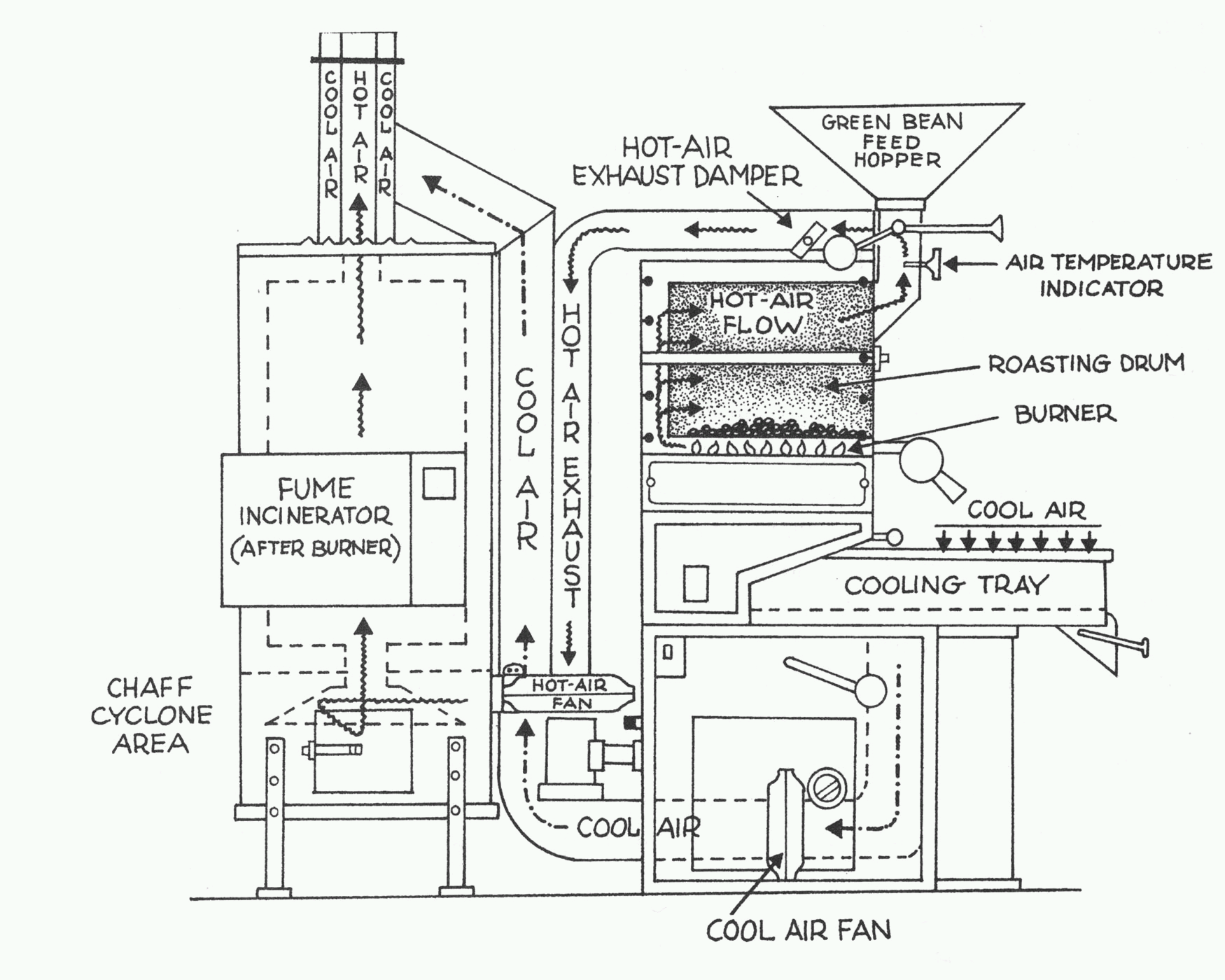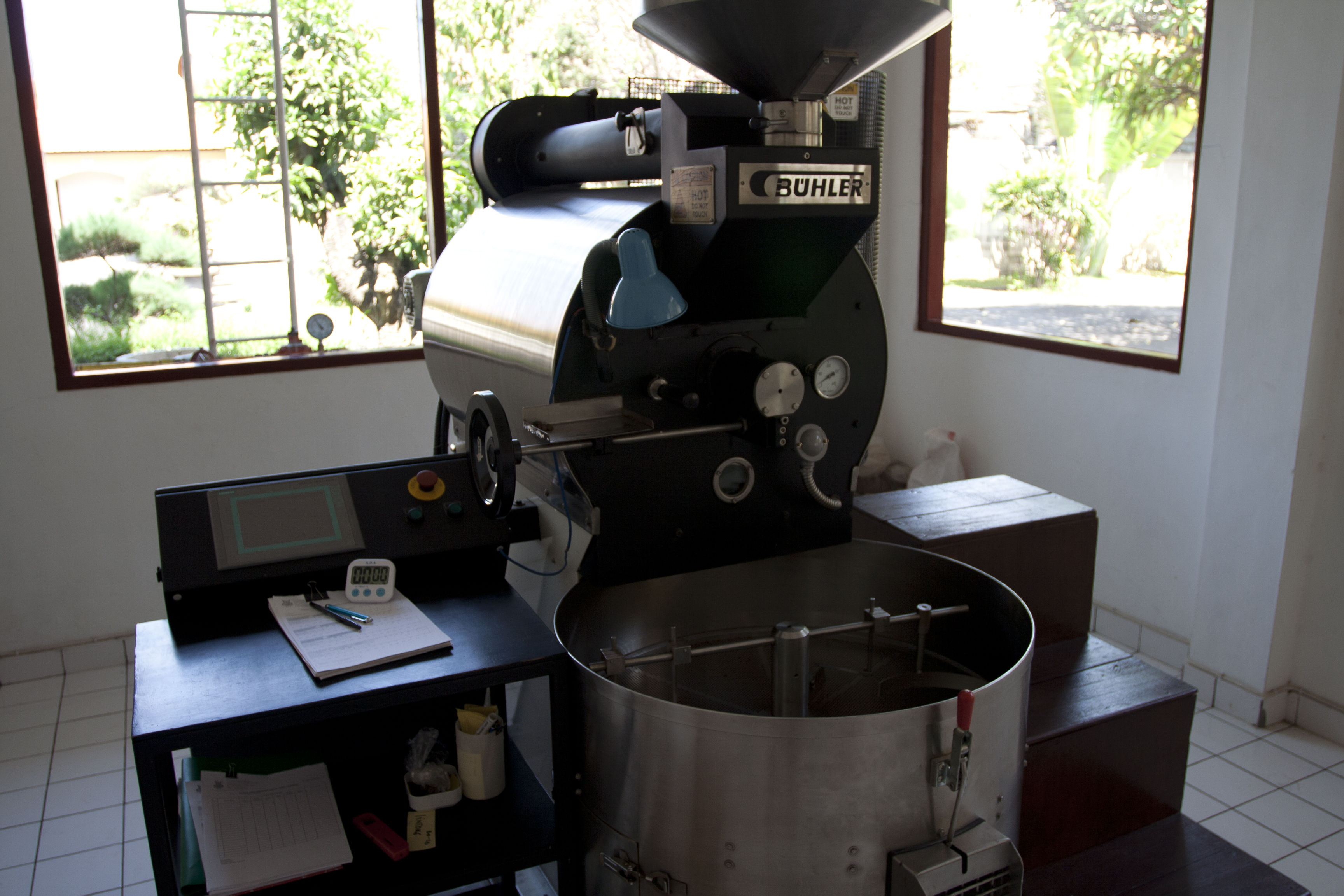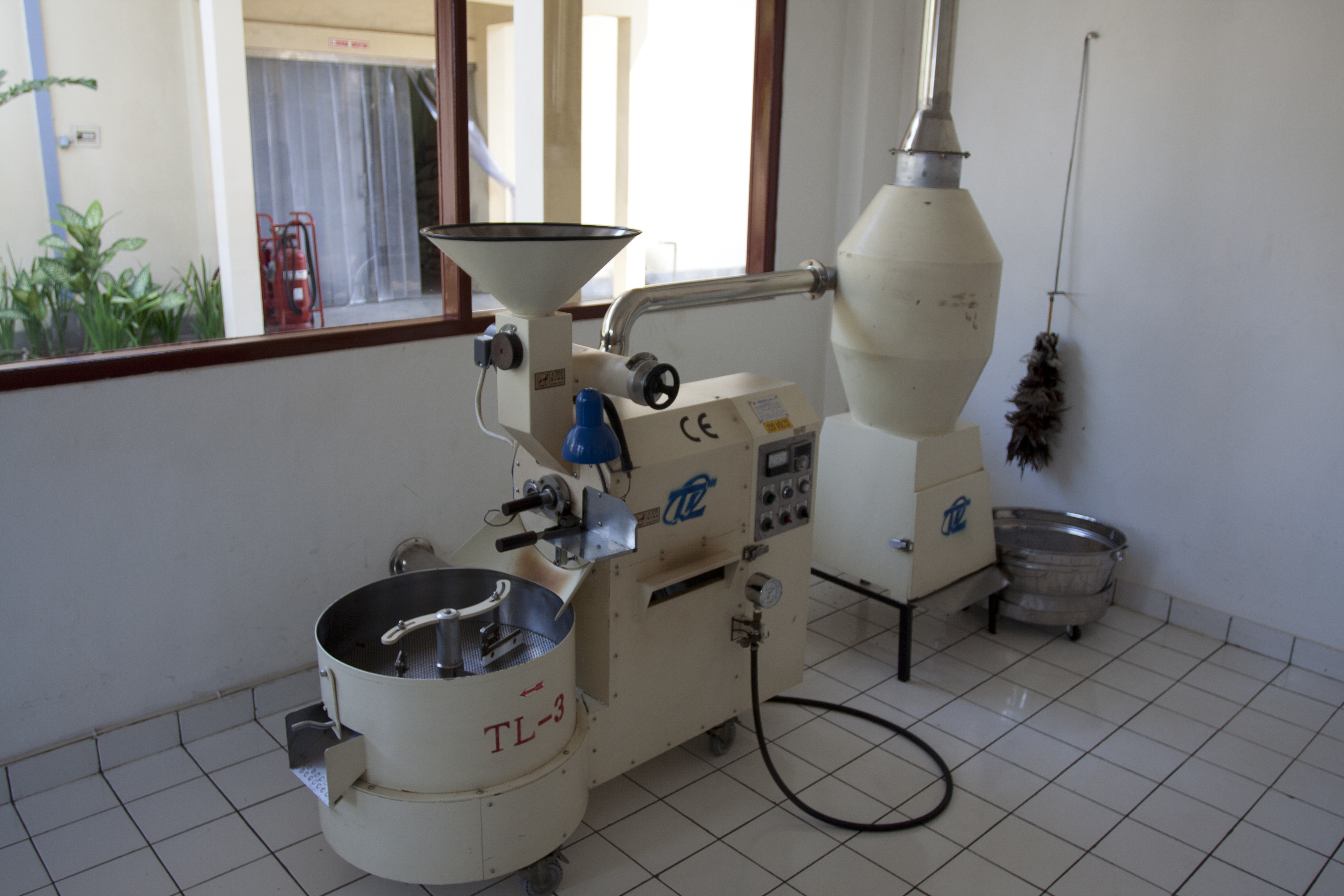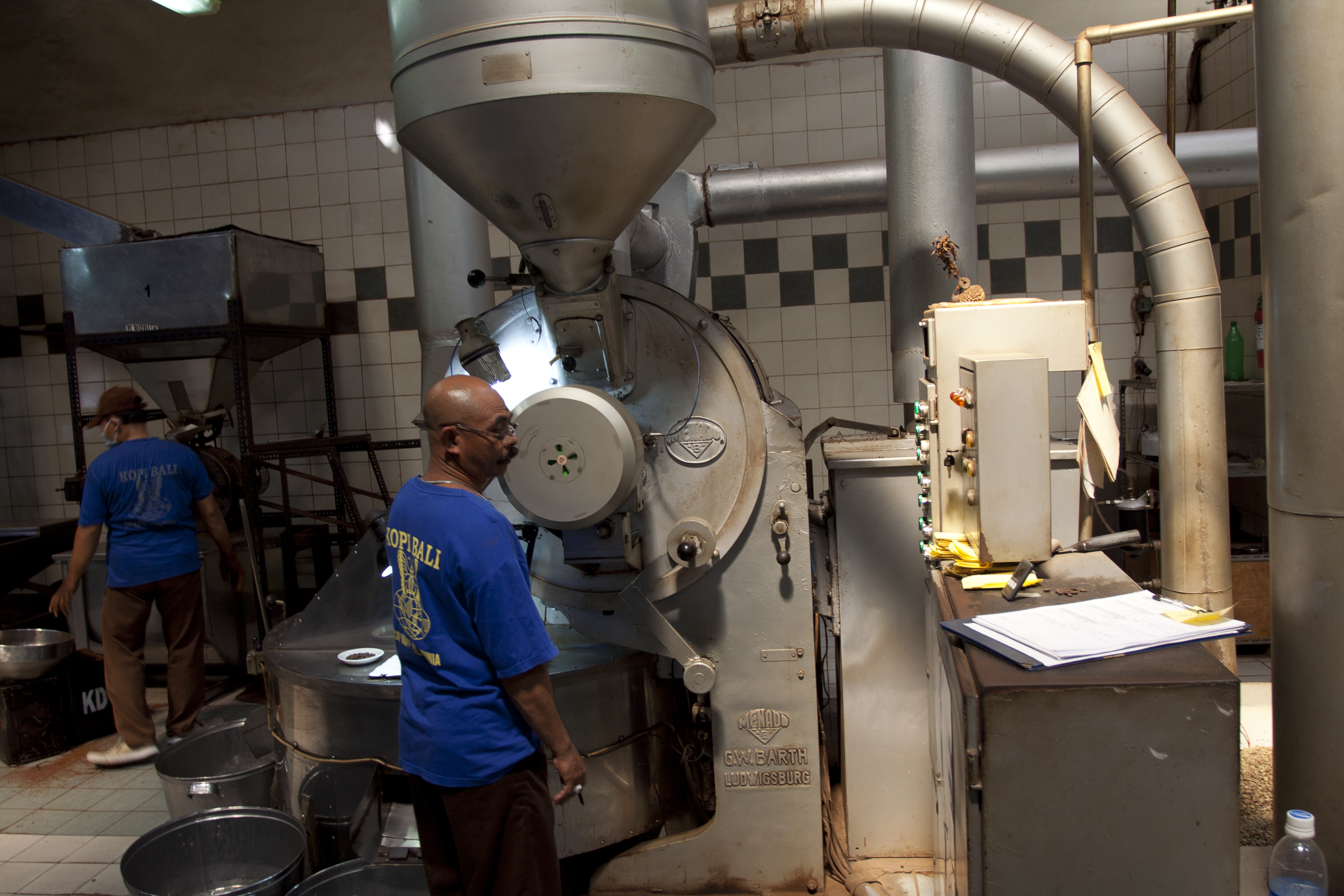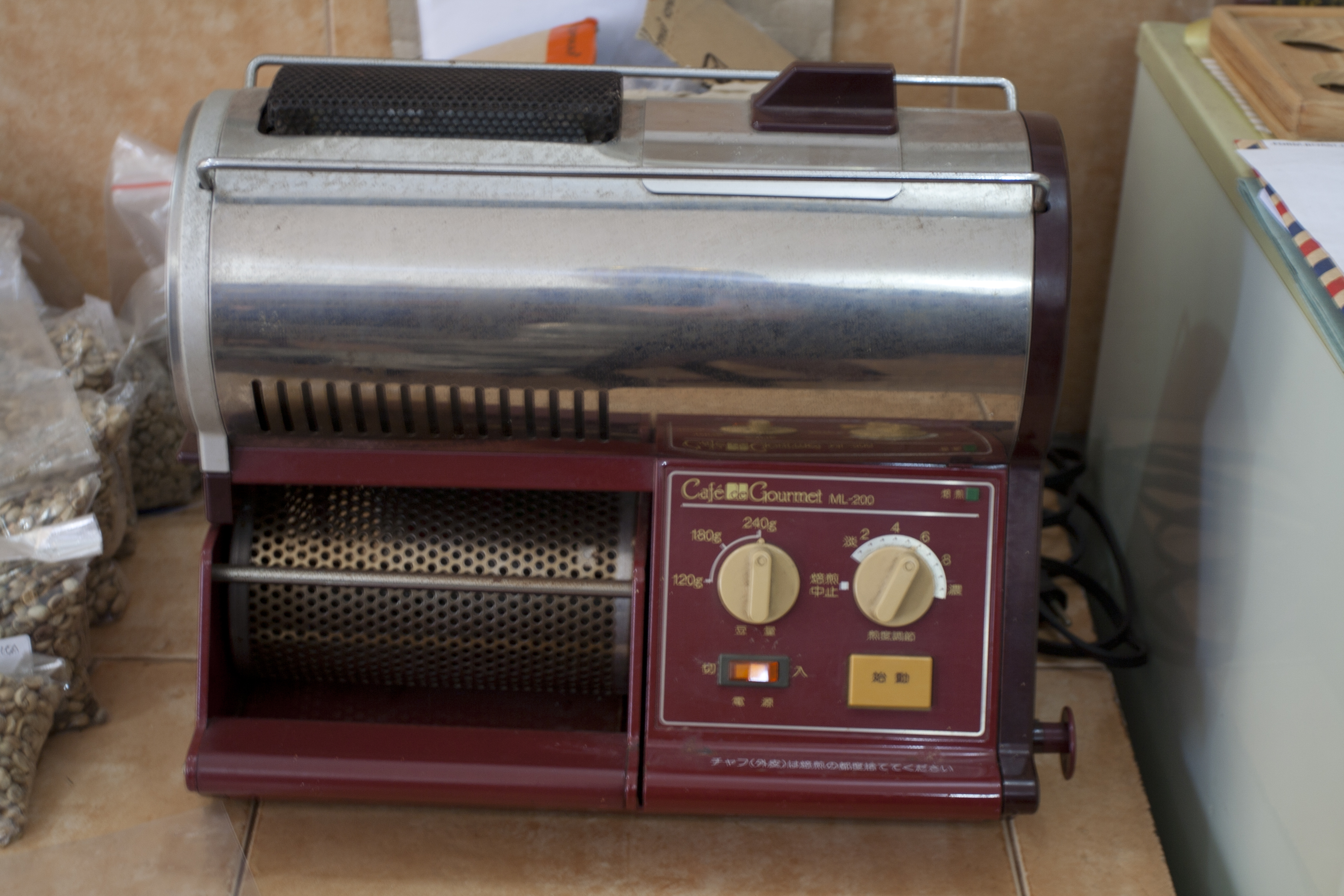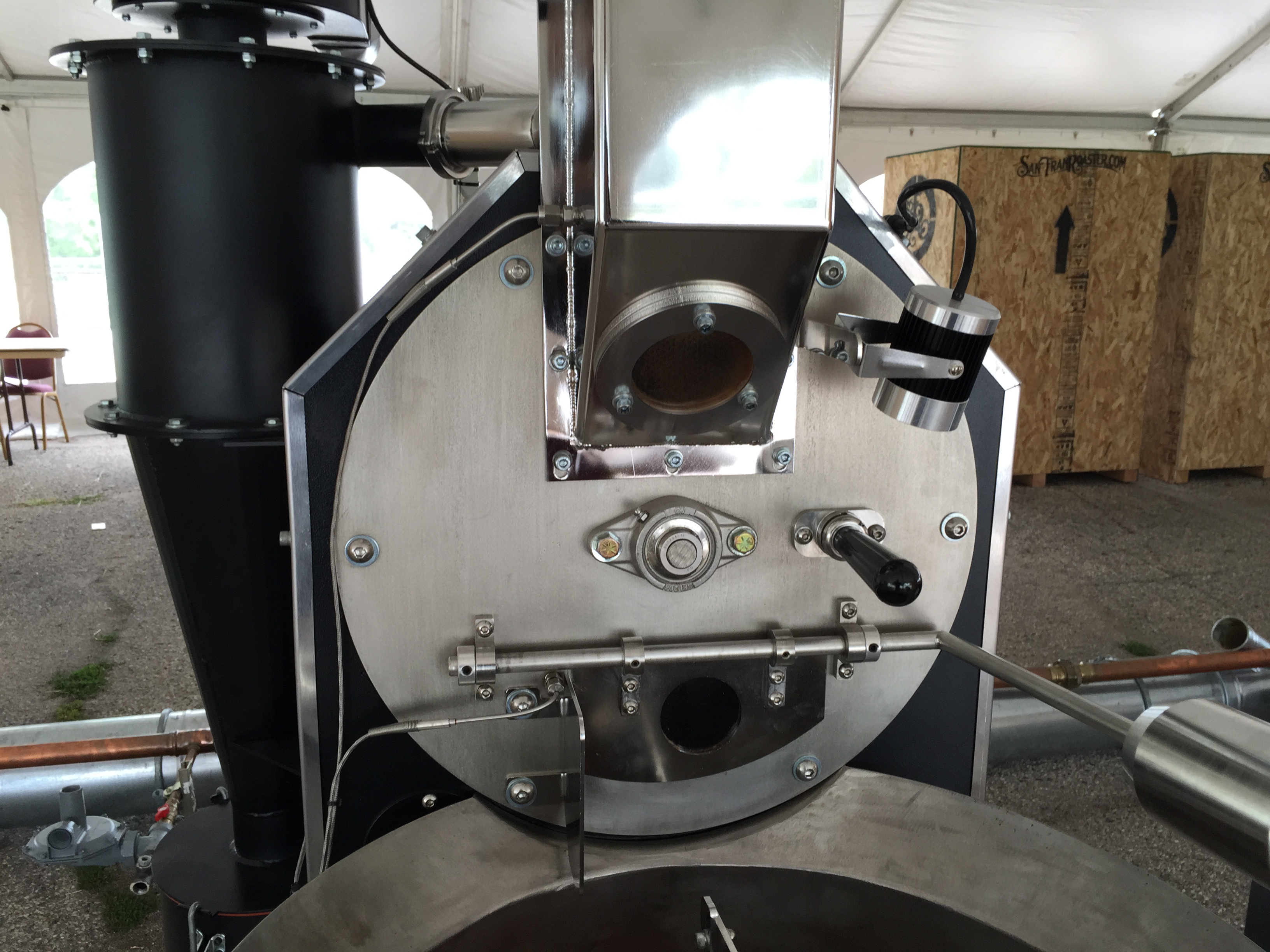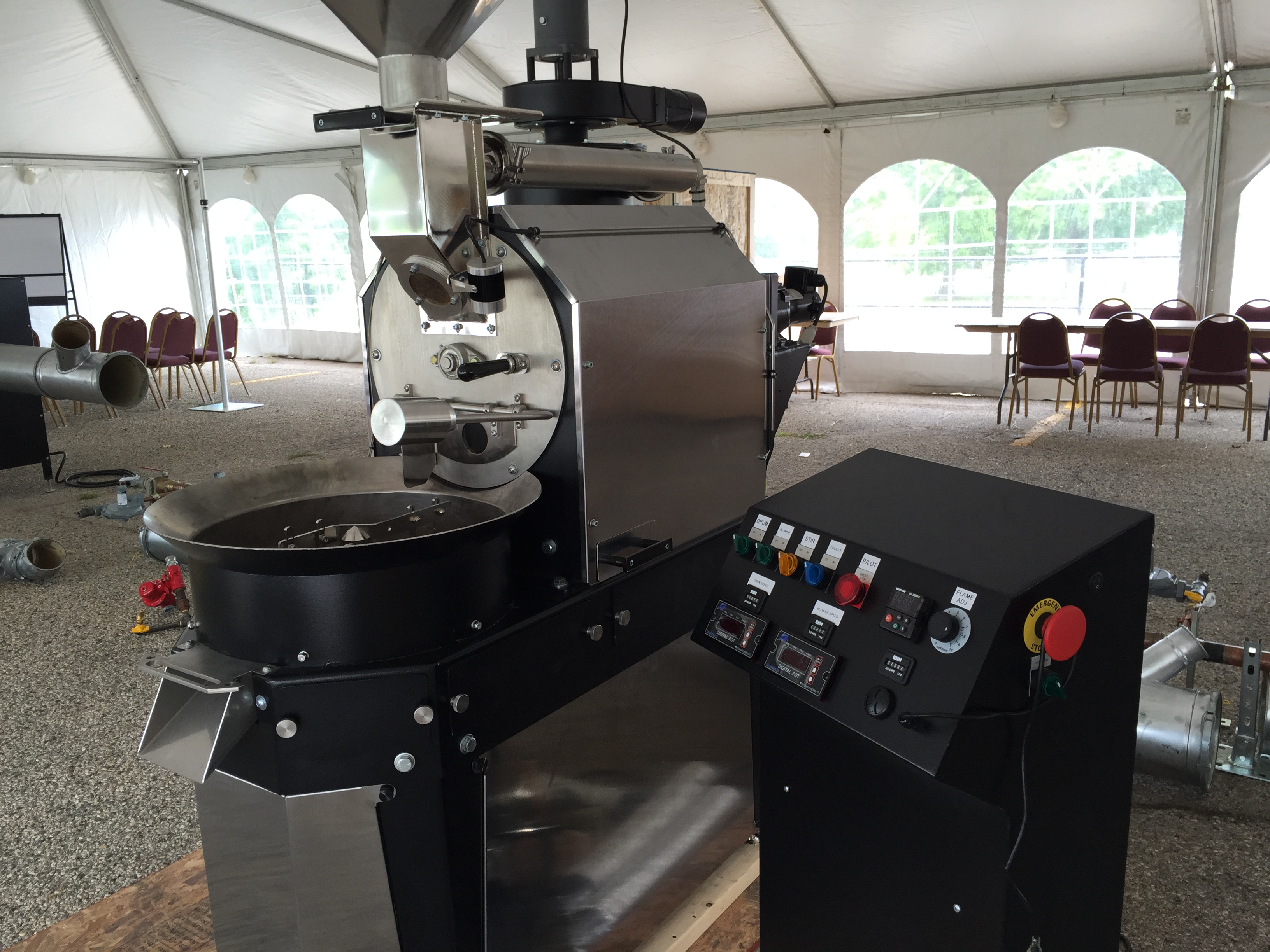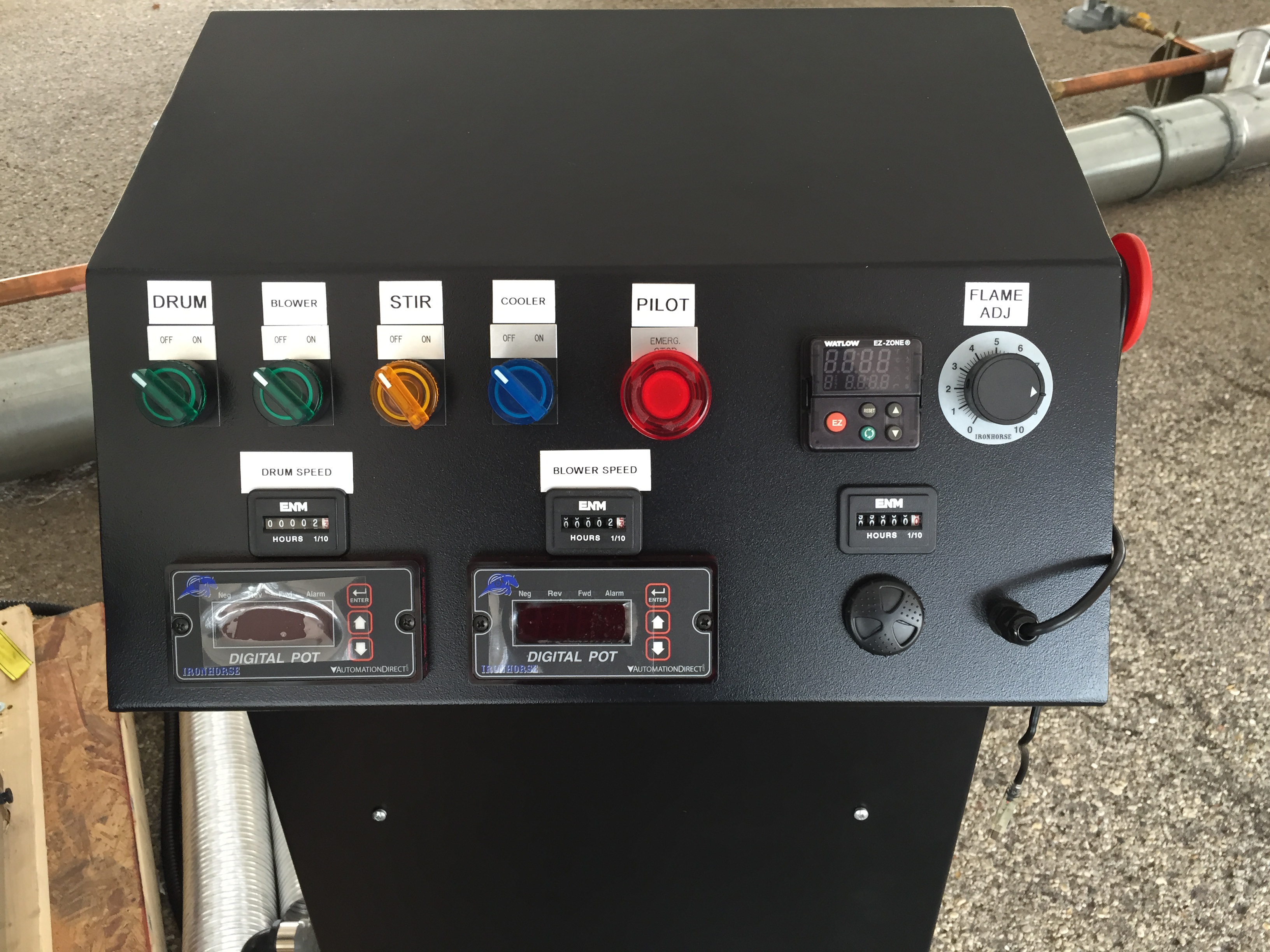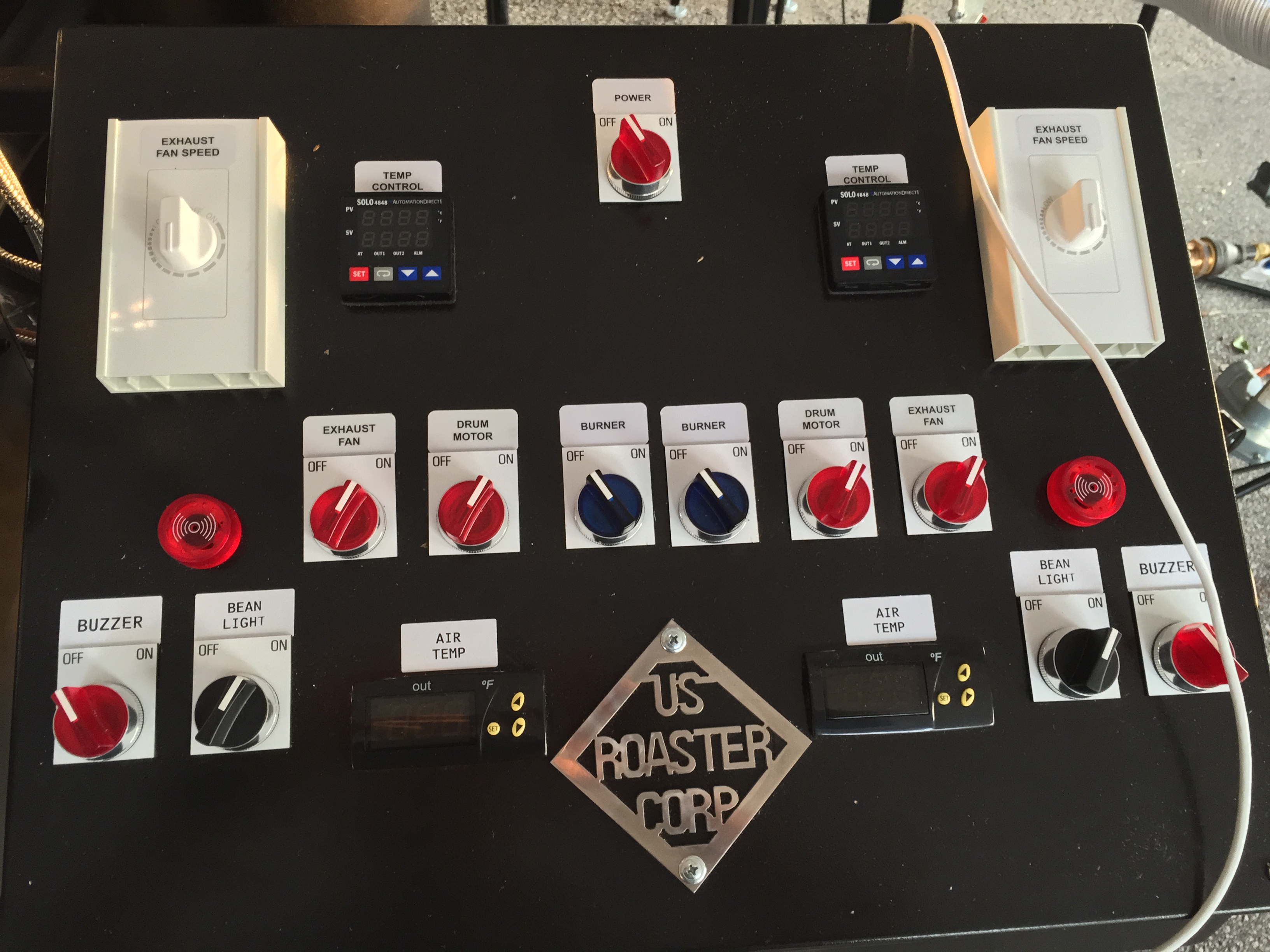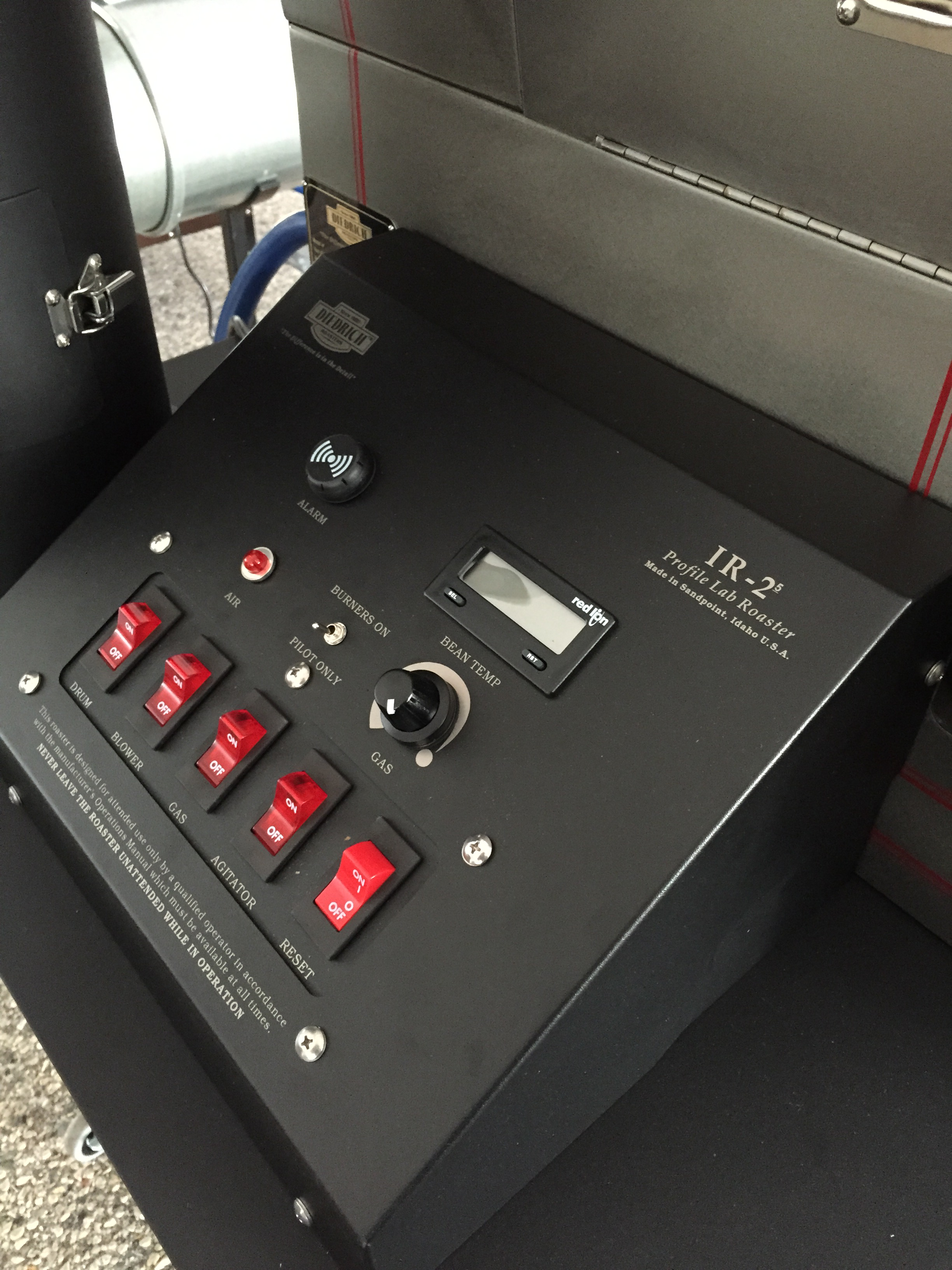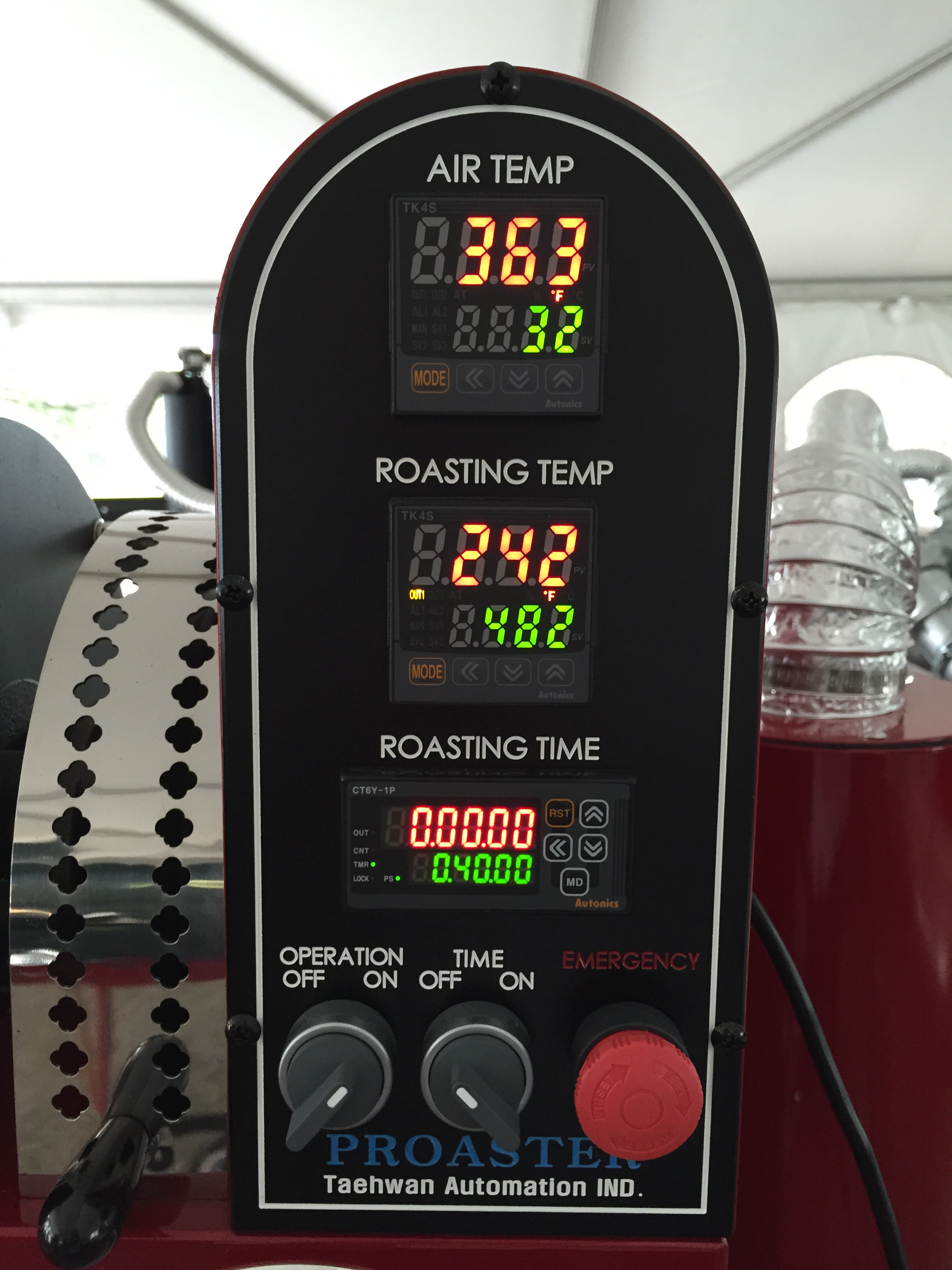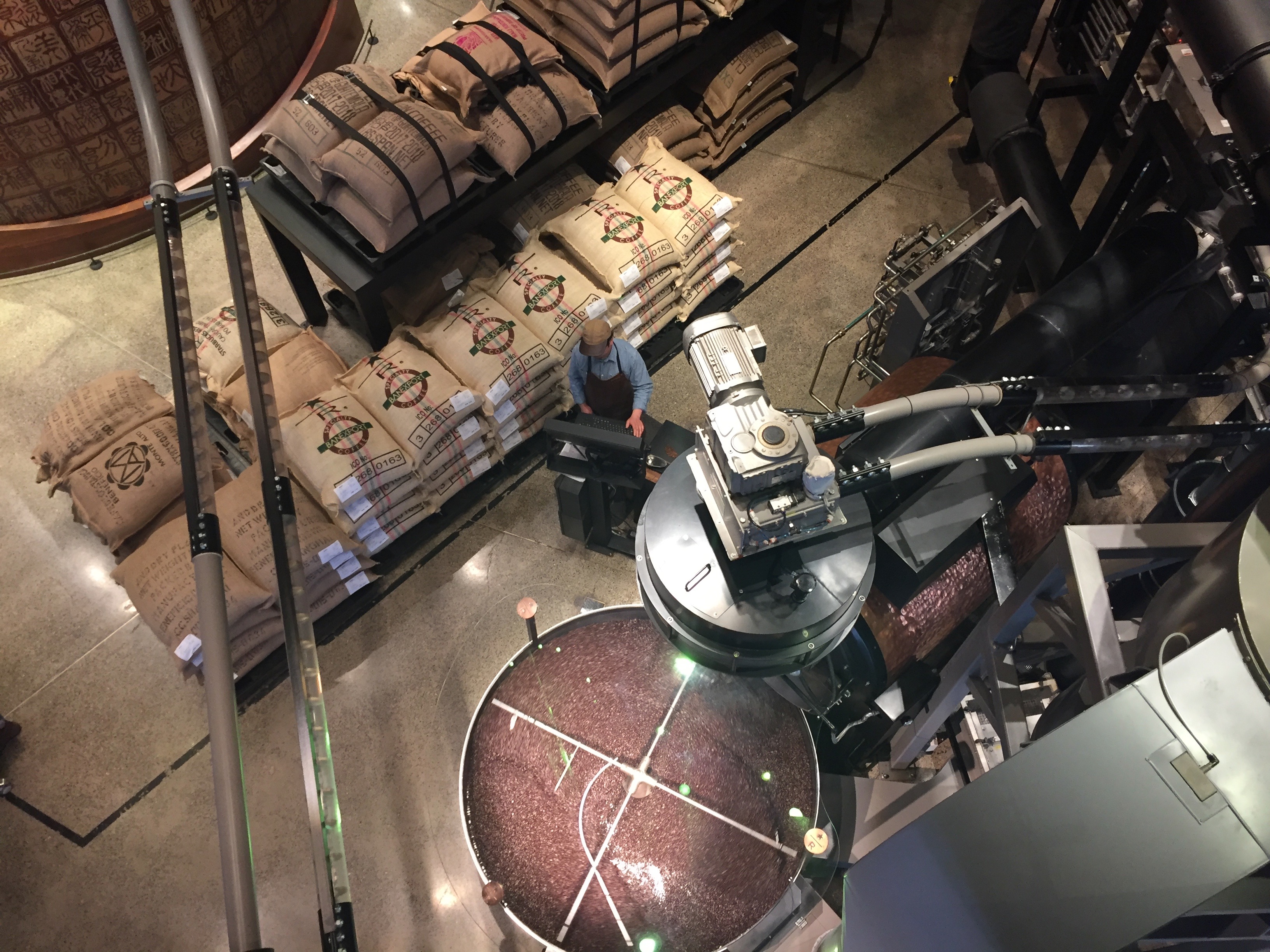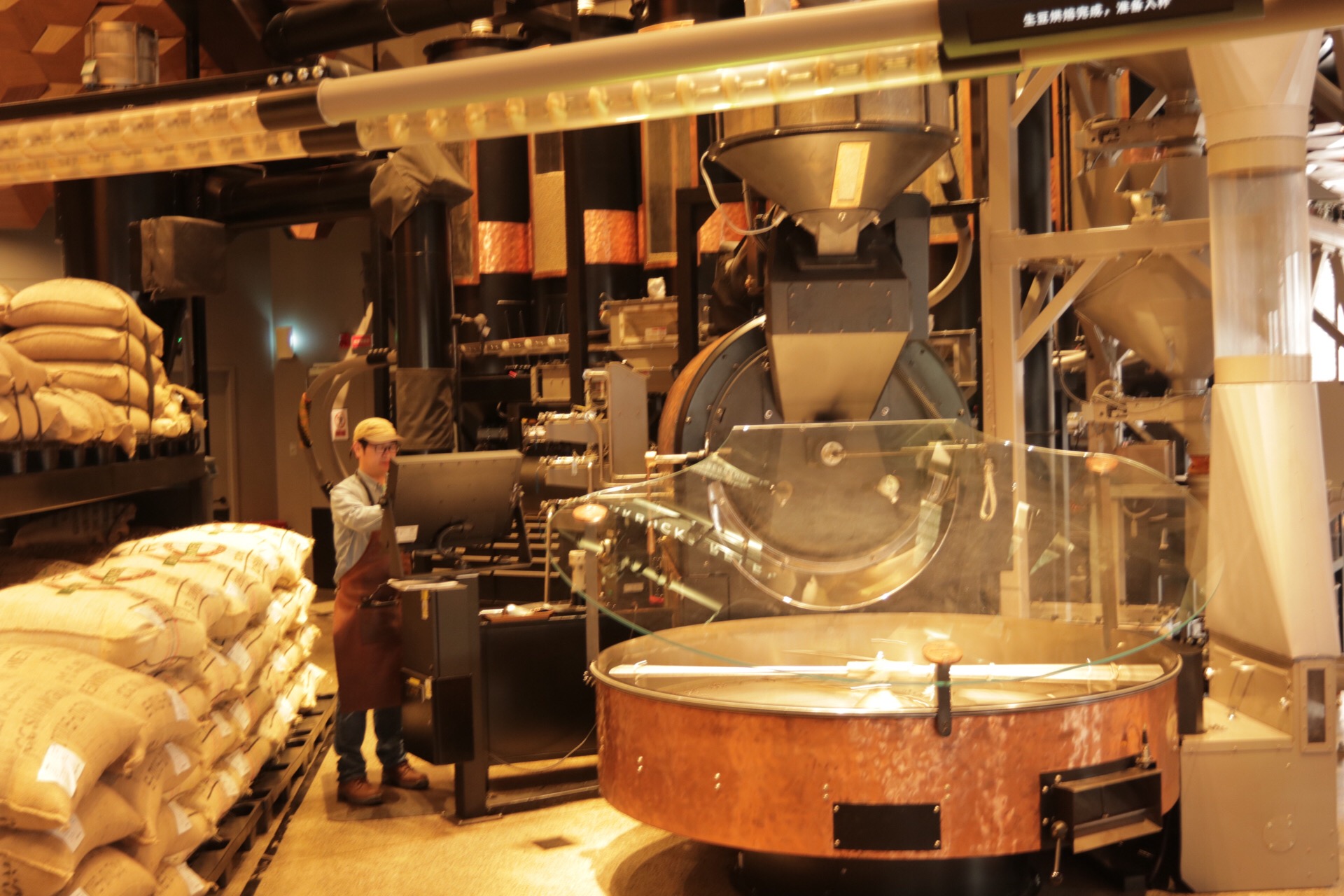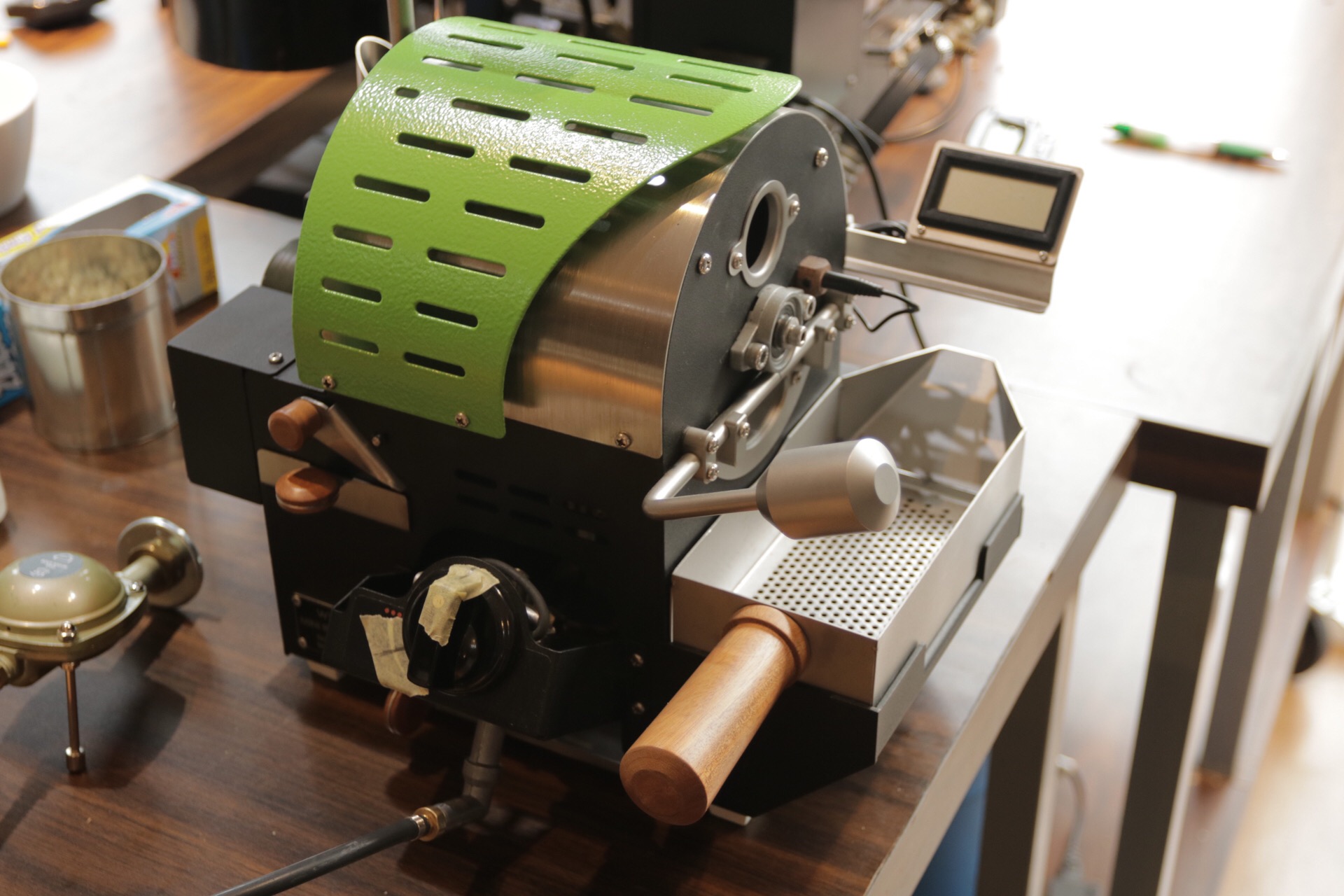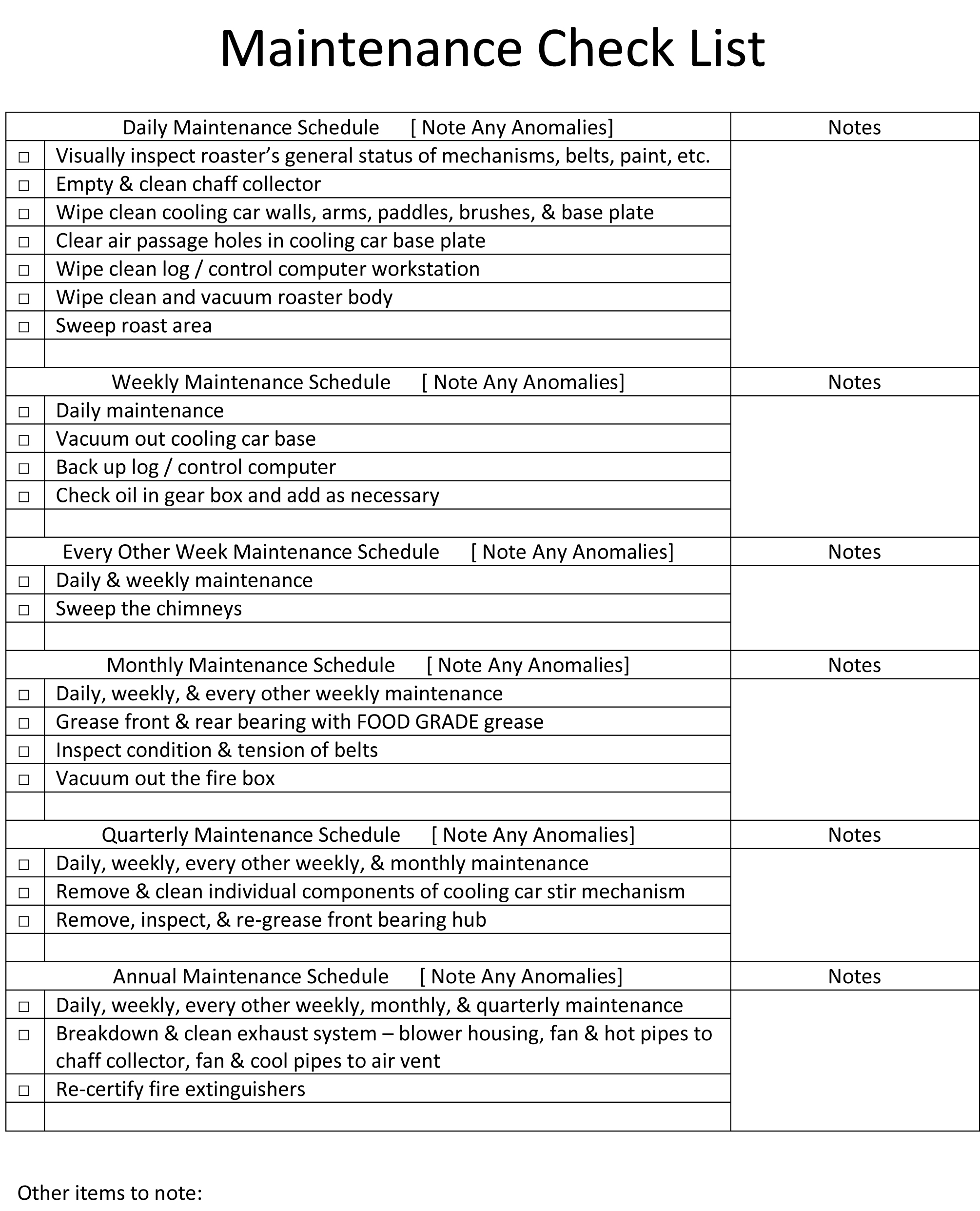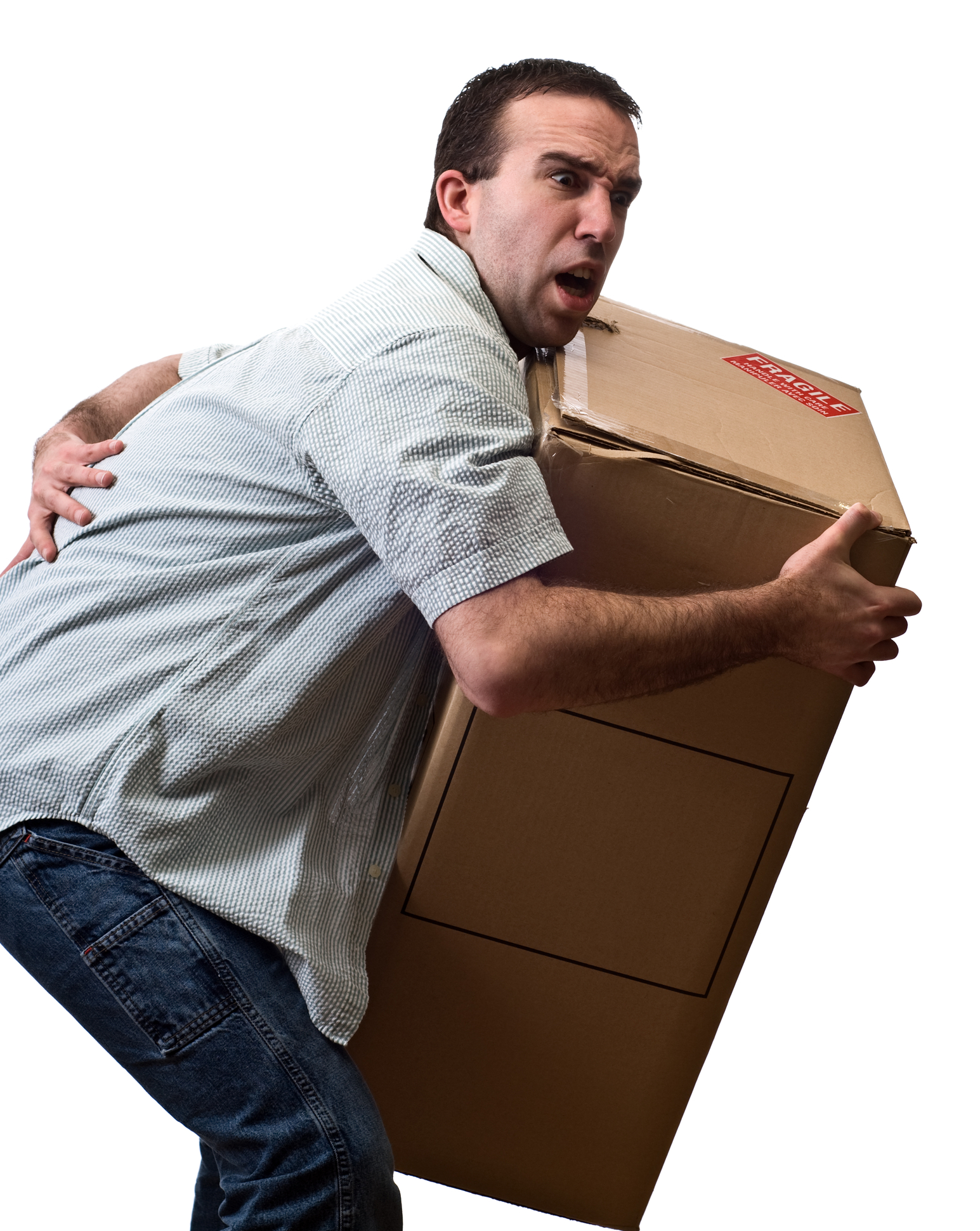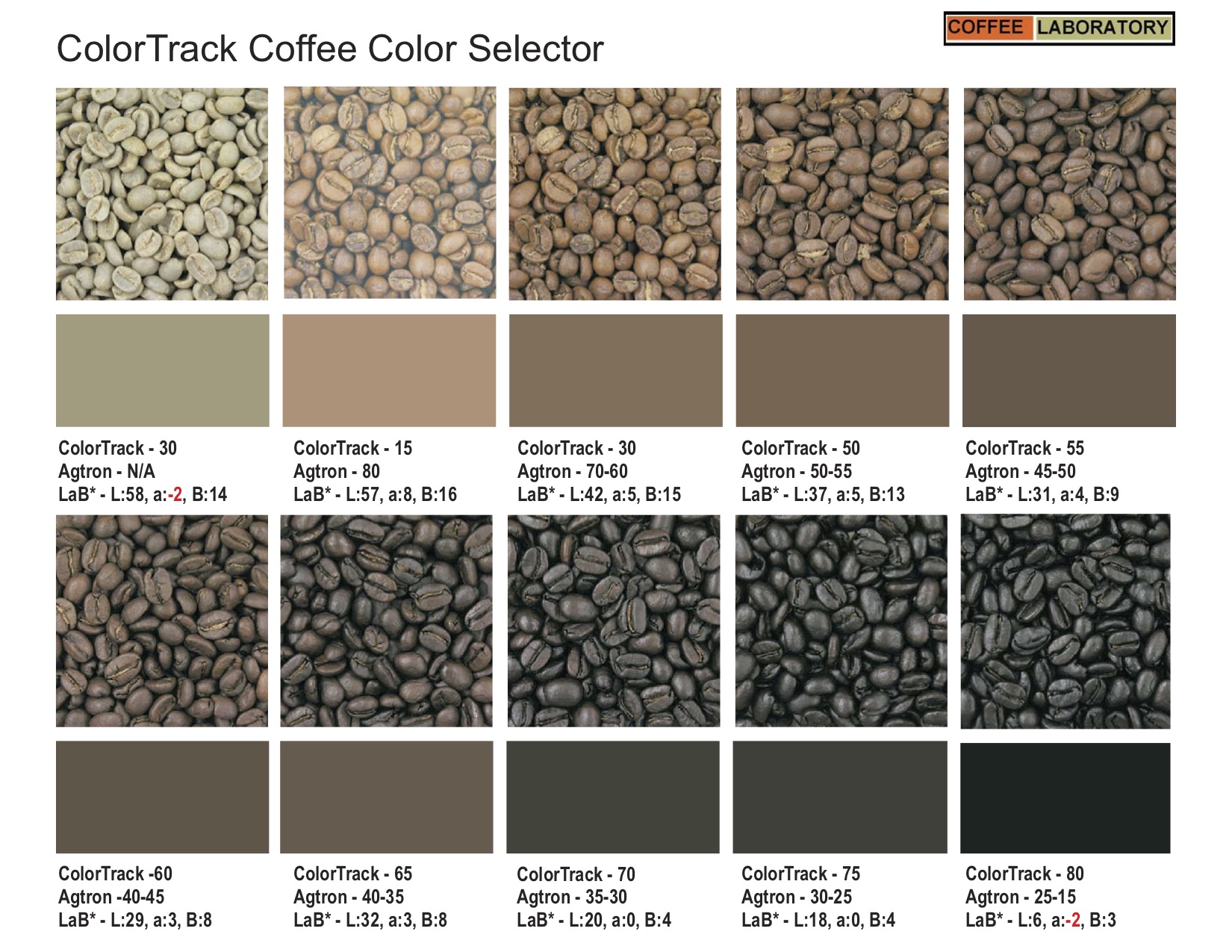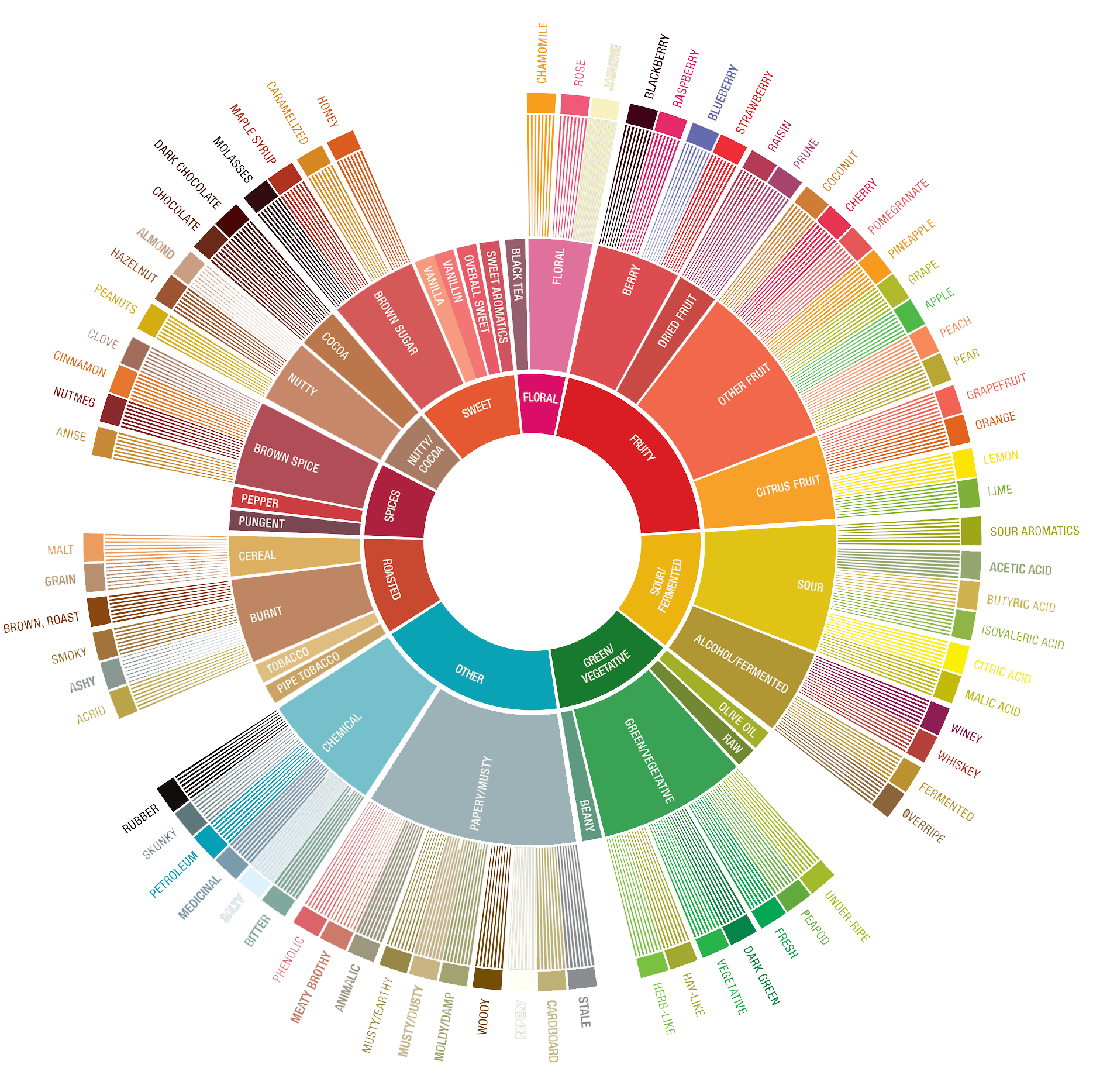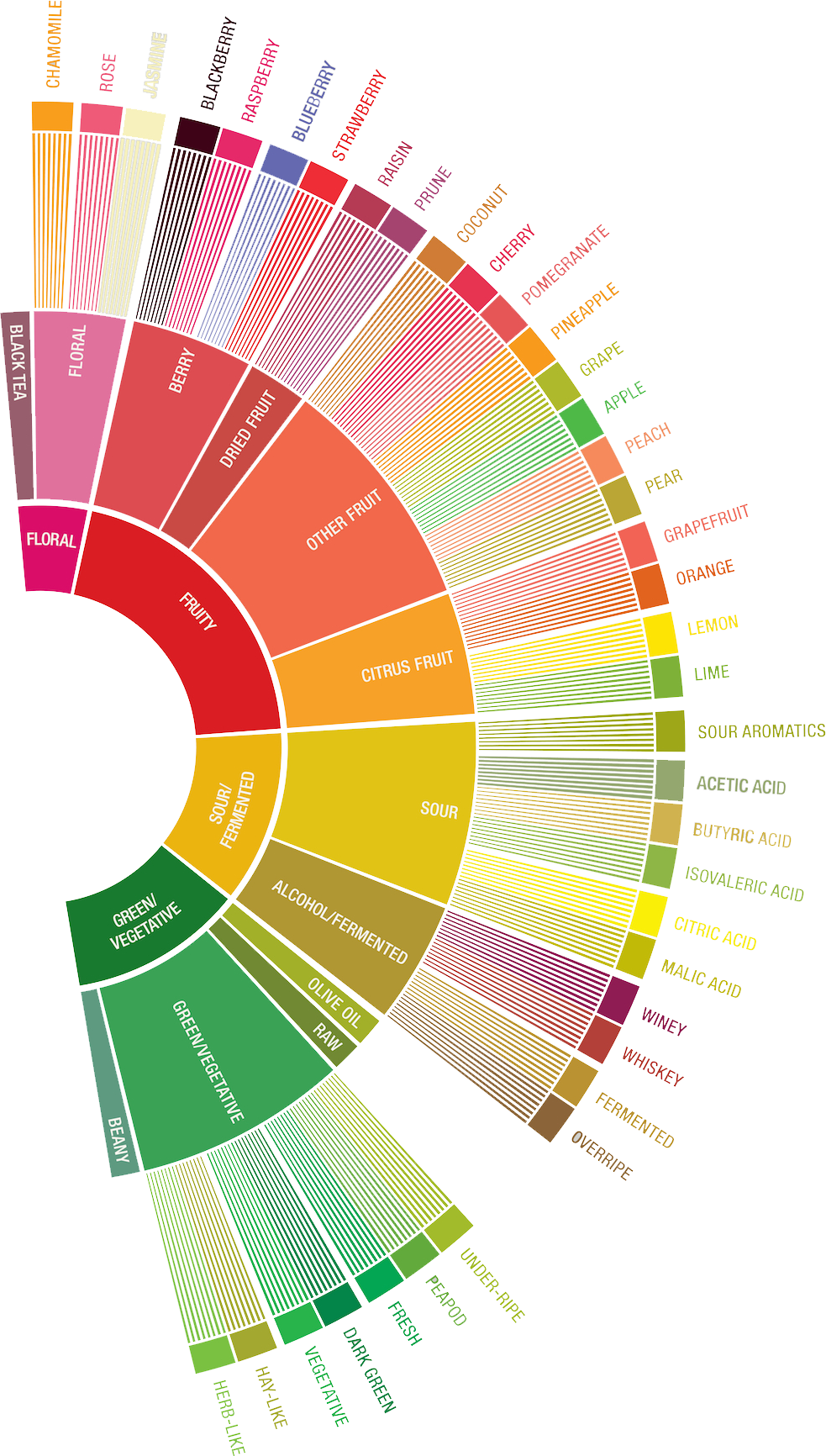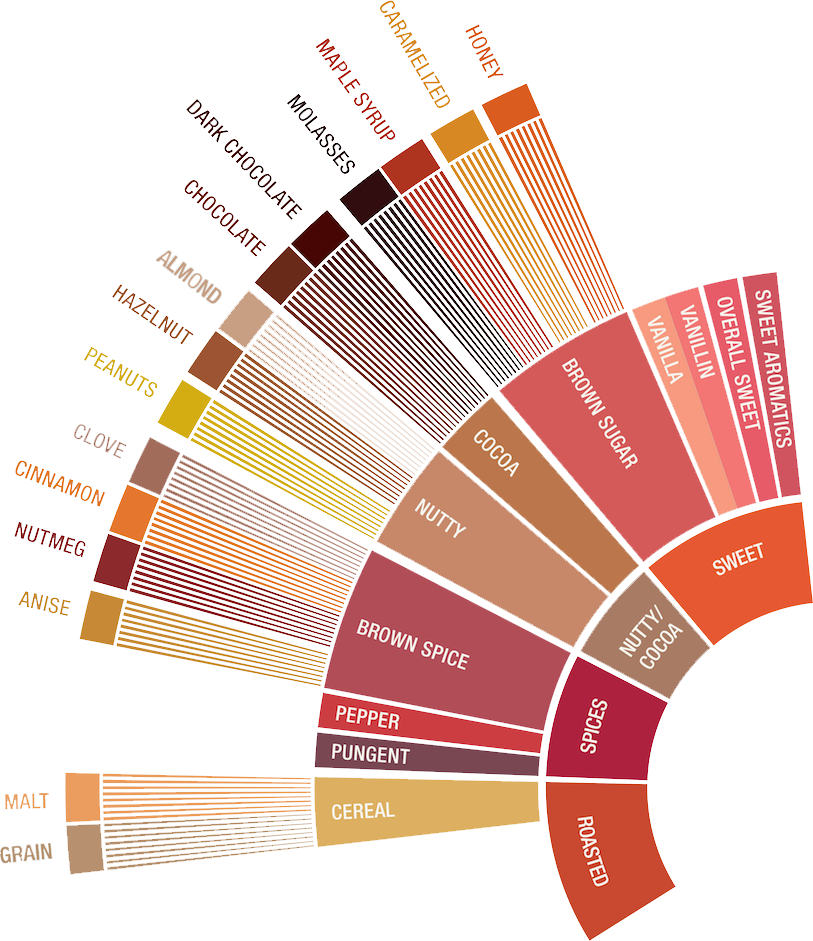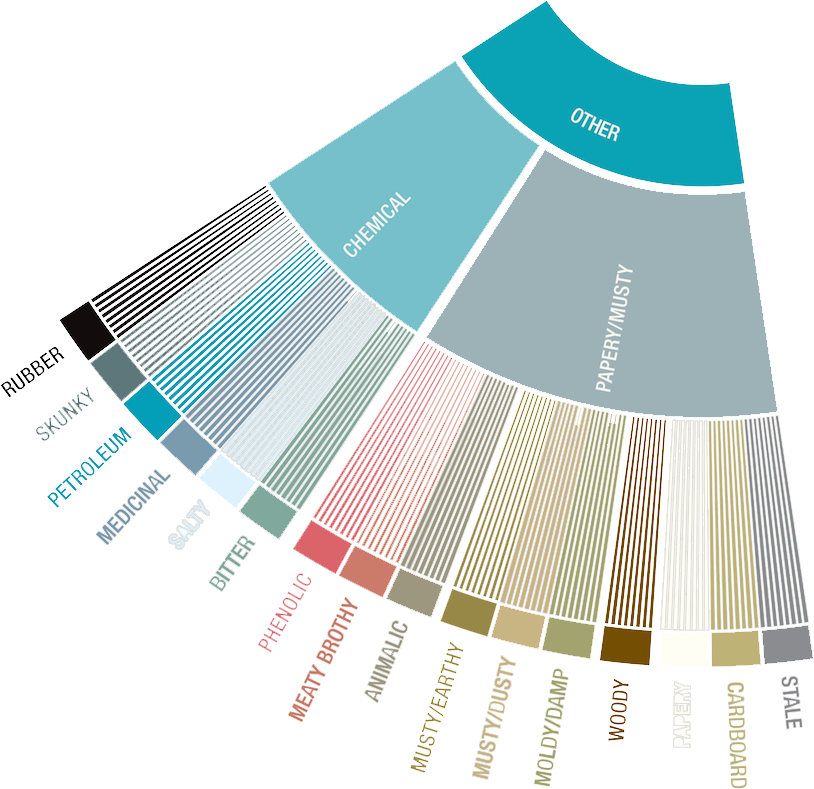Roasting: Foundation
#CaffeinatedTraining
#OilSlickCoffee
Press "h" for keyboard shortcuts for this presentation
Housekeeping
- Silence your phones
- Bathrooms located...
- Exits located...
Three Burner Types
- Atmospheric burner (gas burner)
- Electric burner (like toaster oven)
- Infrared burner (ceramic plates in BBQ grill)
Electrical burners possible on small (batch size 12 and less) roasters.
Electrical heating elements are slow but are fine for roasting.
Electricity always drives motors and general control circuits.
Heat Transfer Methods
- Convective
- Conductive
- Radiative
Related:
- Endothermic
- Exothermic
- Two most common: convective and conductive.
- Convective involves moving air.
- Conductive requires physical contact and a temperature gradient. Drum rotation important here
Radiated heat example: the light emitted from a red-hot heating element in a toaster
Keywords: Convection Conduction Endothermic Exothermic
Safety
Loading coffee (heavy weight over head, maybe on stool, etc)
Smoke in roasting (ventilation, as smoke does escape the roaster into the room)
Product Safety Concerns
Same four areas of concern:
- Green coffee storage
- Roasting
- Packaging, production
- Shipping
Seawater contamination during transport
Rocks in green coffee
Reacting to roaster fires
- Relax and calm down
- Shut off gas (or element if electric)
- Keep drum rotating
- Can spray into charge door
- Don’t eject beans
- Monitor bean temp, drop < 93°C
Movie time!
Marty Curtis has over 40 years experience in rebuilding Roasters & Pollution Control Equipment.
He attended training and put in the time necessary to know how to deal with Roasting System fires with safety in mind.
Anyone who watches these videos and thinks they are ready to do what Marty does are mistaken in their assumption.
Marty Curtis WILL NOT assume any liability, with anyone, who tries to intentionally create a roaster fire as depicted in these videos.
You assume ALL RISKS & LIABILITY for any actions you undertake in this regards.
Respectfully,
Marty G. Curtis CEO Artisan Coffee Group Ltd
Fire Classifications
- Class A
Ordinary items (wood, paper, plastic, rags) - Class B
Flammable Liquids - Class C
Electrical equipment
Image By Karta24, GFDL or CC-BY-SA-3.0, via Wikimedia Commons
Roaster Cleaning & Maintenance
- Remove chaff often (fuel source for fire)
- Know where chaff collects in your roaster
- At least daily, more for “chaffy” beans
- Keep ducts clear/clean (creosote & chaff)
- Keep moving parts lubricated (food grade grease)
- Follow manufacturer’s manual and recommendations
Quick Review
What are the three different types of burners?
What are the three different types of burners?
Atmospheric, electric, and infra-red
What are four areas of safety concern?
What are four areas of safety concern?
- Green Coffee Storage
- Roasting
- Packaging & Production
- Shipping
How do you handle a fire in the roaster?
How do you handle a fire in the roaster?
1. Relax and calm down
How do you handle a fire in the roaster?
1. Relax and calm down
2. Shut off gas (or element if electric)
How do you handle a fire in the roaster?
1. Relax and calm down
2. Shut off gas (or element if electric)
3. Keep drum rotating
How do you handle a fire in the roaster?
1. Relax and calm down
2. Shut off gas (or element if electric)
3. Keep drum rotating
4. Can spray into charge door
How do you handle a fire in the roaster?
1. Relax and calm down
2. Shut off gas (or element if electric)
3. Keep drum rotating
4. Can spray into charge door
5. Don't eject beans
How do you handle a fire in the roaster?
1. Relax and calm down
2. Shut off gas (or element if electric)
3. Keep drum rotating
4. Can spray into charge door
5. Don't eject beans
6. Monitor bean temp. Drop when below 93°C
Physical changes in the bean
- Dries out
- Progressively darkens
- Becomes increasingly brittle
- First Crack
- Size can increase 30 - 100%
- Second crack
- Eventually oil seeps out (especially beyond second crack)
- Sometimes get divots (can be a roast defect)
- Rapid cooling (≤ 4min) to halt chemical reactions (changes)
Discuss free water. The Vapor wall or bubble.
Discuss exothermic flashes
Contributes to the flick and crash
With slow cooling: less acidity, increased baked flavors
First Crack and Second Crack
- Every successful roast has a first crack
- First crack is the result of rapid release of pent-up vapor/steam pressure and CO2
- Not all roasts reach second crack (operator’s preference)
- Exothermic flashes as escaping heat affects environment
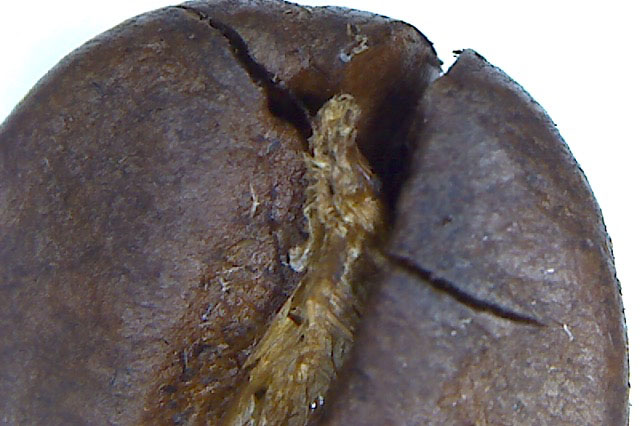
Cracks caused by internal pressure
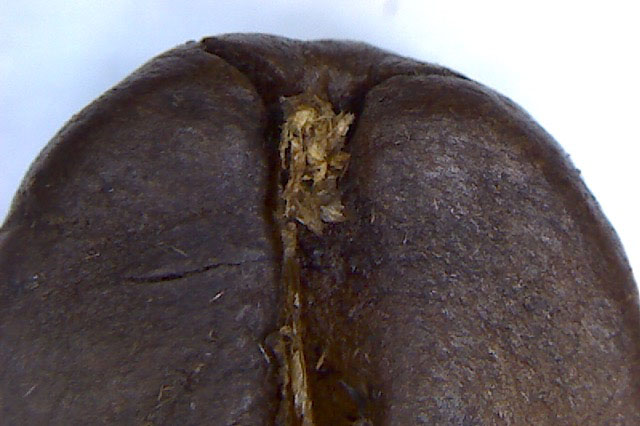
Cracks caused by internal pressure
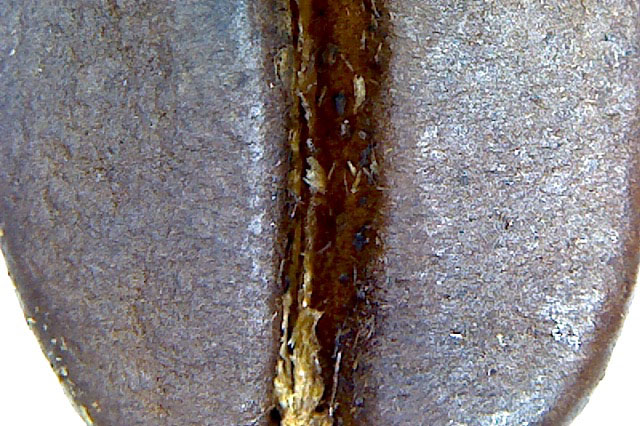
Seam separation and charring of material
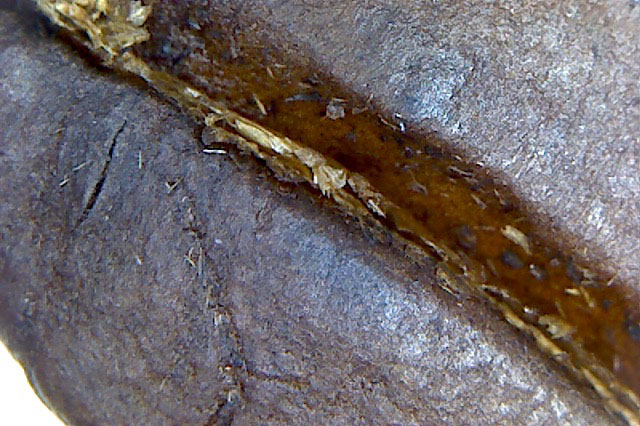
Cracks, seam separation, and charring of material
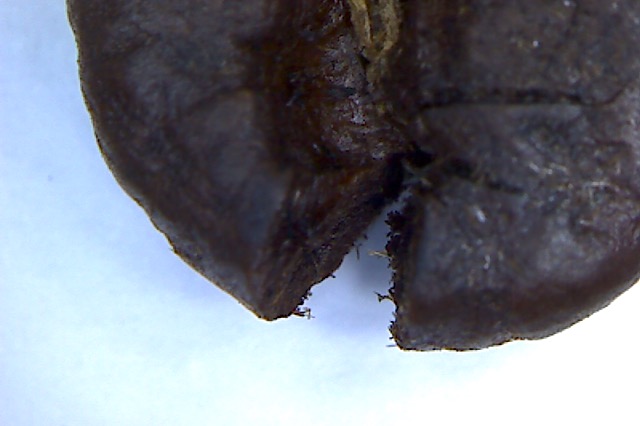
Significant structural damage
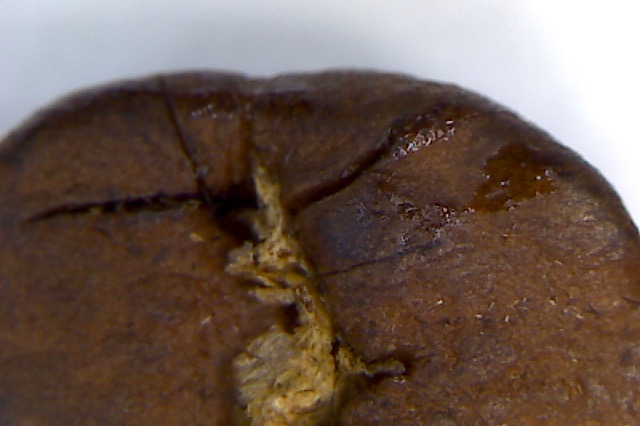
Cracks, some surface charring, and oil seepage
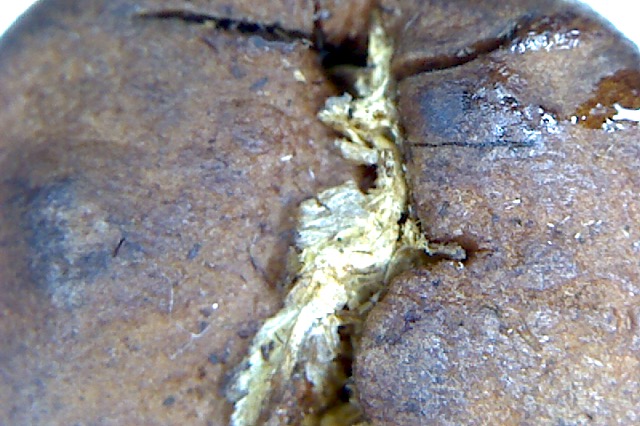
Cracks, some surface charring, and oil seepage
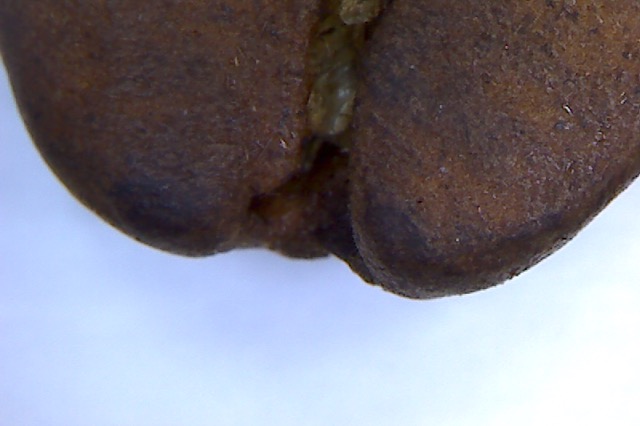
Slight tipping and charring. Blown-out embryo
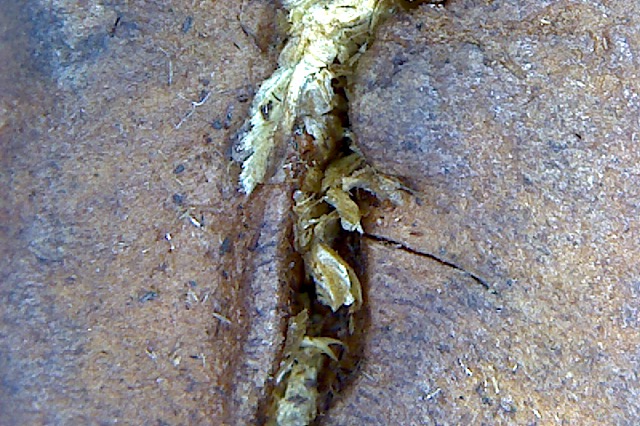
Cracks and charring
Roast Data
Measurements that can be collected from green and roasted coffee:
- Green: batch weight
- Green: bulk density
- Green: volume
- Green: screen size
- Green: moisture content (acceptable range for Specialty?)
- Roasted: color
- Roasted: weight*
- Roasted: bulk density*
- Roasted: volume*
Cupping data should be associated with roast profile for post-roast analysis.
*Calculate percent changes for these attributes
Label the following
| Charge | First Crack |
| Turning Point | Second Crack |
| Color Change (Green to yellow) | Roast End |
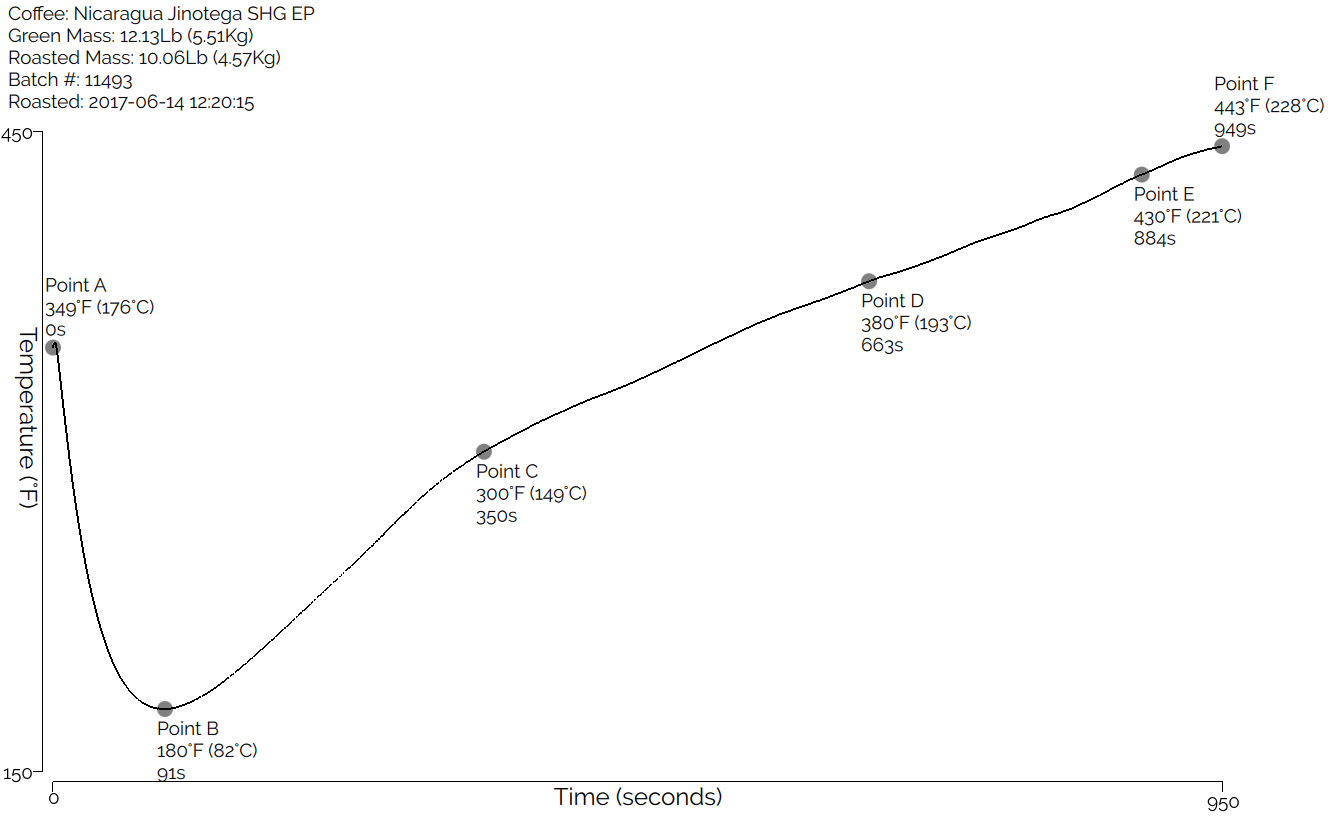
Draw profile on board, label phases & discuss RD
Roast Progression
Generally speaking:
Lighter roasts highlight (preserve) acidity, enzymatic flavors/aromas
Darker roasts emphasize chocolatey, nutty, bitter flavors/aromas
Activity: Visually ID Roast Stages
Temperature Midway Point ≈ 75 Agtron
- Relatively new concept to SCA curriculum
- Generates easy color to work/train with
- Not meant to be a standard or a sweet spot regarding end product

Don’t break your head over it
Not intended to be a standard or a sweet spot or anything significant outside of training
Easy color to work with from a training perspective


221-193=28
28/2=14
14+193=207
The Flavor Wheel
Umbrella Terms General Terms Specific Terms
Whitespace indicates relationship
World Coffee Research Lexicon
The terms used in the new flavor wheel come from the WCR lexicon.
Descriptive
- No “good” or “bad” attributes (unbiased)
- Not for ranking coffee
- Purely descriptive
Quantifiable
- Uses an intensity scale of 1 - 15
- Allows for easy comparison of two or more coffees
Replicable
- When used properly, tasters from all over the world will experience and describe the same coffee the same way
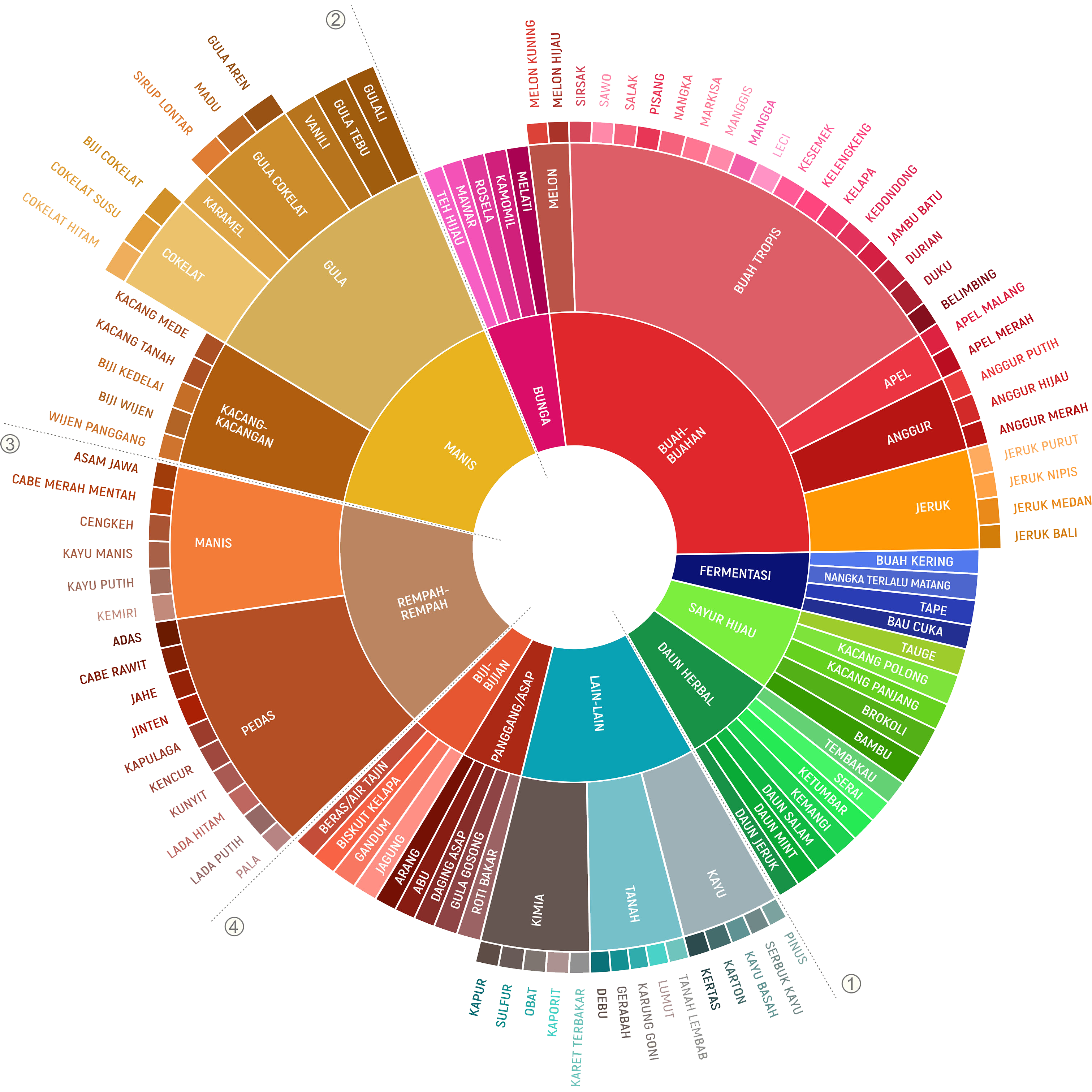
Value 4 Value
If you found this content useful, please consider supporting my work. I charge no set fee or price for providing this. You can help keep information like this openly accessible by matching the value you received in the content; value 4 value.
Ko-fi / Bitcoin Wallet: 32SW9kcAsJdZvQKBazhLUZBSD9YS8DDqe8
End of presentation
